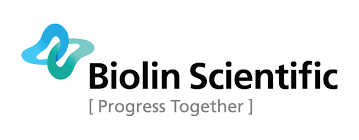Over the past few years, self-cleaning coating technologies have become increasingly popular as they reduce cleaning labour expenses and are also used extensively in commercial products. The coatings are used in a wide range of applications such as paints, textiles, cements, and window glasses. For instance, a fabric having self-cleaning properties would not only help in saving fabric cleaning costs but would also extend the life of the textile.
As such, self-cleaning coatings can be separated into two categories namely, hydrophilic coatings and hydrophobic coatings. These types of coatings are capable of cleaning themselves in the presence of water. Using tensiometers, hydrophobicity, hydrophilicity and wettability can be easily measured. This article demonstrates the application of the Attension Theta optical tensiometer (Figure 1) for the characterization of self-cleaning coatings.
.jpg)
Figure 1. Attension Theta optical tensiometer
Hydrophobic Self-Cleaning Coatings
The "Lotus effect" is a phenomenon (Figure 2) in which droplets of water can be observed on the surface of a lotus leaf due to its hydrophobic nature. In general, hydrophobic self-cleaning coatings exhibit high water contact angles of greater than 90 degrees. The water contact angle of self-cleaning coatings is greater than 150° and hence they have superhydrophobic properties. These coatings repel water and the water thus formed rolls away, carrying dirt along the way.
.jpg)
Figure 2. The lotus effect is a special case of water repelling, or hydrophobic, behavior.
As topographical and chemical properties of a surface determine the contact angle, a superhydrophobic surface can be achieved only when the hydrophobic surface is made strong at the nano and micronanometer scales.
Hence, the effectiveness of a self-cleaning coating not only depends on the adhesion of dirt particles to water droplet but also on the chemical composition and roughness of the surface. Using an optical tensiometer, these surface properties can be evaluated thoroughly.
Hydrophilic Self-Cleaning Coatings
Self-cleaning coatings that are hydrophilic are based on photocatalysis and these coatings are capable of breaking down impurities. Self-cleaning windows based on these coating materials are already available on the market. Such types of windows function in two ways to clean their surfaces. First, the organic dirt that is absorbed on the window is decomposed by photocatalysis and then washed away by water, which forms sheets due to low contact angles.
.jpg)
Figure 3. The principle of hydrophilic self-cleaning coating. UV illumination makes the electrons of the TiO2-surface to break water molecules into hydroxyl radicals (1). (2) These radicals react with organic dirt, breaking them into smaller particles (3). The small particles are easily washed away by water (4).
Titanium Dioxide
Titanium dioxide (TiO2) is often used as a coating material for hydrophilic self-cleaning surfaces, thanks to its excellent chemical and physical properties. This material is also affordable, non- toxic, easy to handle and chemically inert in the absence of light. It is used as a pigment in paints, cosmetics, and other household products. TiO2 also has excellent superhydrophilic properties and oxidation power, which make it a suitable self-cleaning coating material for outdoor applications. Figure 3 shows the self-cleaning effect of TiO2.
Case Study: TiO2 Coating on Polymers
Kasanen et al have analyzed the impact of TiO2 photocatalytic coating on glass and polymer through an optical tensiometer. First, a water-borne polyurethane (PU) dispersion was used to coat the surfaces and a suspension comprising TiO2 particles was injected on the PU’s surface.
These samples were then treated by plasma utilizing oxygen as a reactive gas and finally coated with palmitic acid and UV-radiated to carry out photocatalytic analysis. With the help of the Attension optical tensiometer, the samples’ static water contact angles were determined. Table 1 shows the results of the study.
Table 1. Water contact angles on different sample surfaces
| Substrate material |
Contact angle (°) of substrate coated with pu binder |
Contact angle (°) after 24h uv illumination* |
| High density polyethane |
81,3 |
Superhydrophilic |
| Polyvinylchloride |
62,0 |
58,7 |
| Glass disk |
58,7 |
Superhydrophilic |
* after previous plasma treatment and palmitic acid deposition
Results of the contact angle thus obtained demonstrate that plasma treatment is important for the TiO2 to experience a photocatalytic effect. The samples lacked superhydrophilical properties sans the plasma treatment. The type of substrate also had an effect on TiO2 coating.
Conclusion
Self-cleaning coatings are based on hydrophobic or hydrophilic technologies and can be utilized in a wide range of industrial applications to enhance both the functionality and usability of different materials. As a result, their wettability characteristics depend on the efficiency of the coatings. Using optical tensiometry, the surface characteristics of self-cleaning coatings can be easily determined by performing contact angle measurements.
About Biolin Scientific
Biolin Scientific is a leading Nordic instrumentation company with roots in Sweden, Denmark and Finland. Our customers include companies working with pharmaceuticals, energy, chemicals, and advanced materials, as well as academic and governmental research institutes. Our precision instruments help discover better drugs faster, develop better solutions for energy and materials, and perform research at the frontiers of science and technology.
Biolin Scientific proprietary systems are based on nanotechnology and advanced measurement techniques. They have earned leadership in several industries through our commitment to scientific excellence and continuous product development.
Our commitment to customer service and application support is a key feature of our operations. We focus on working together with customers and building long-standing relations. Today, Biolin Scientific provides products and services in more than 70 countries around the world.

This information has been sourced, reviewed and adapted from materials provided by Biolin Scientific.
For more information on this source, please visit Biolin Scientific.